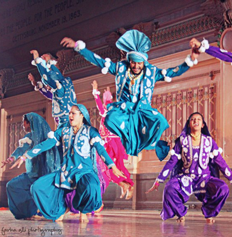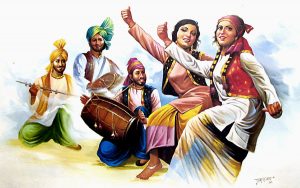It’s time to say goodbye to the lovely sitcom TV shows that bring smiles to so many faces. I know it’s sad to see them go, but I hope to keep you entertained with my next topic! I have decided to transition to a different passion to talk about. It’s a passion that I have been involved with since I was about five years old. I have grown up with it, and it has become a fun, enjoyable part of my life.
In my first semester, I joined Penn State’s Sher Bhangra team. I was very excited to be surrounded by people who enjoyed dancing this style of dance called Bhangra. As I mentioned before, I was always involved with it in some manner, but coming to a college environment and still being able to do it made it a little more special. Maybe it was because of the diversity I felt it exhibited, or maybe it was the fact that I could do it in my own way, without any parents watching. It just felt different and unique! Not only did I feel a different experience joining it, but I also started to have a greater appreciation for the dance. I started to understand the greater complexities and meanings held within the moves, the history, and the elements of bhangra.

This is what I want to share with you in my blogs coming up throughout the semester. I want to share with you what I have discovered and learned about the dance, beyond just the moves.
To start, let’s get into what the dance is. Bhangra is a traditional, folk dance based from the Punjab region of India and Pakistan. The style originated from the 14th and 15th centuries and was becoming more known and popular in the early to mid 1800s based on historical records. It has continued to grow in popularity ever since. The traditional method consisted of live singers singing in Punjabi, the language of the region. Accompanied with the singers would be dancers that would “freestyle” to the beat of the drums. This beat is a unique one that isn’t heard in many other styles of music and it encourages energetic dancing in EVERYBODY. Whether at weddings or a local gathering, people will jump to their feet when they hear bhangra music. Of course, nowadays it has transitioned into a more modern style, but there is still an originality to the music and dance. Bhangra is not exclusive. In fact, it has developed as a result of multiple adaptations of moves and songs, and it is still growing today.

This is only a little on the amazing dance of bhangra that I have enjoyed so much in my life. I hope that you can learn the same as I share my knowledge and my story with you on this wonderful form of dance!










